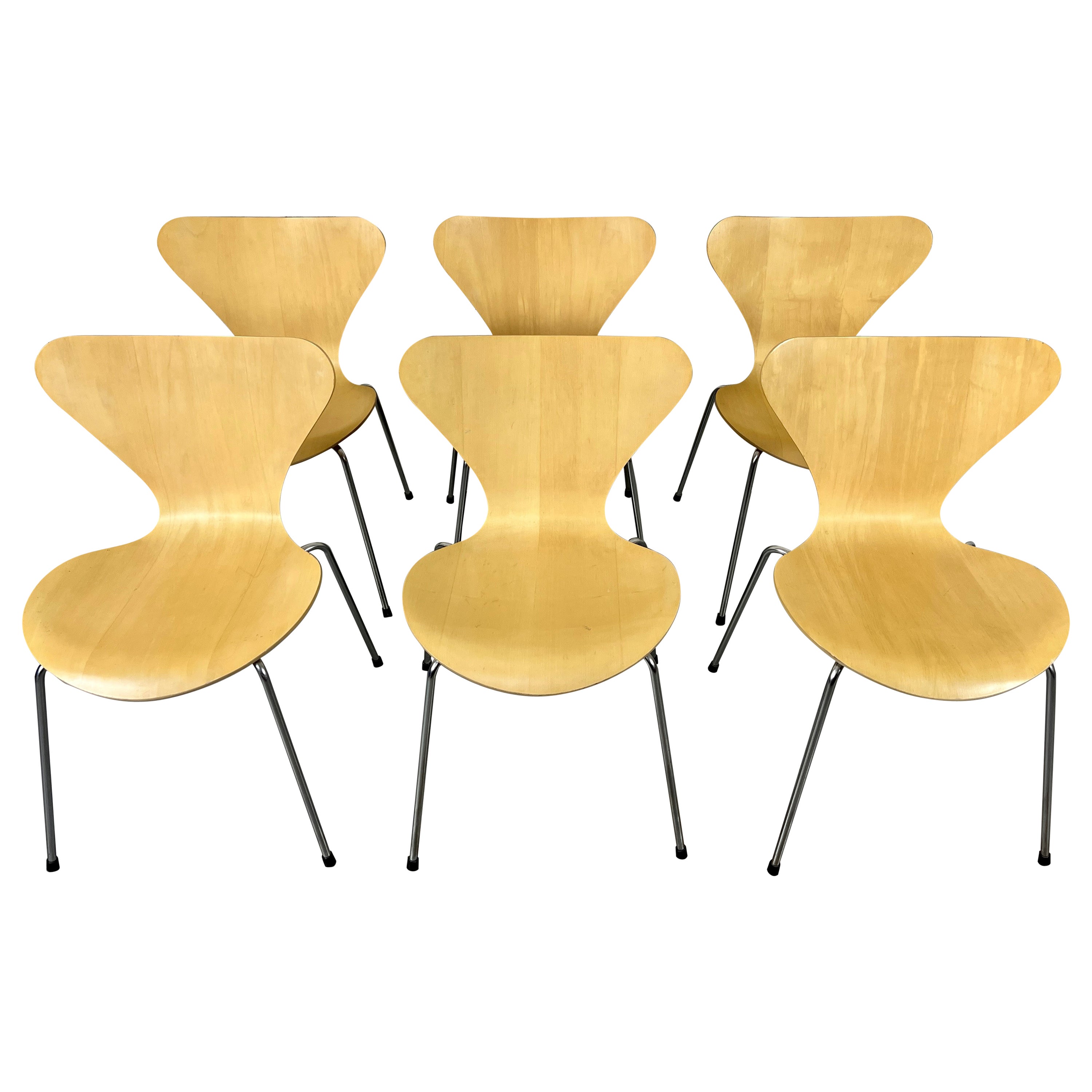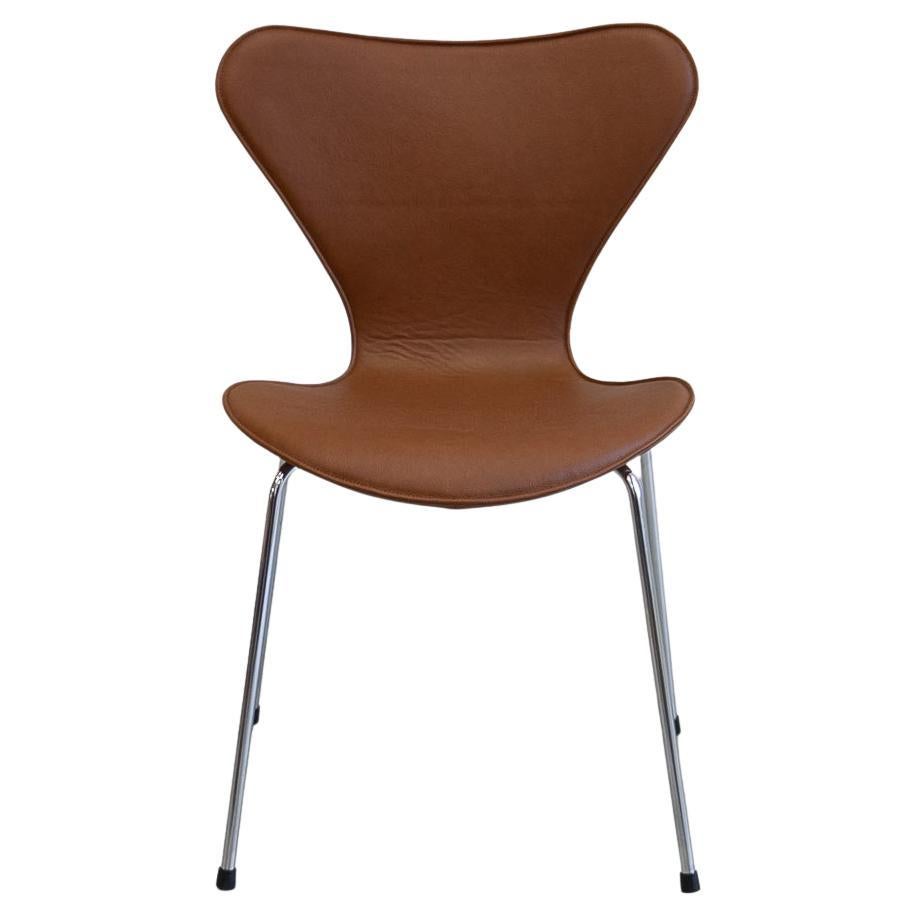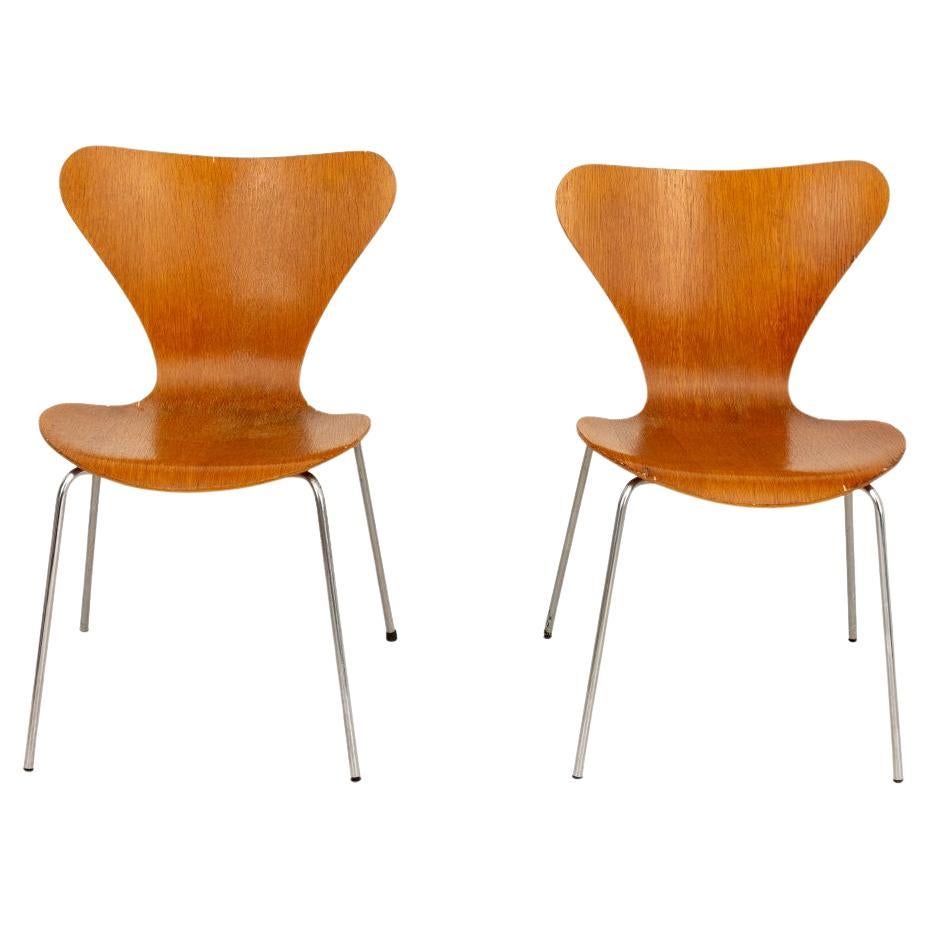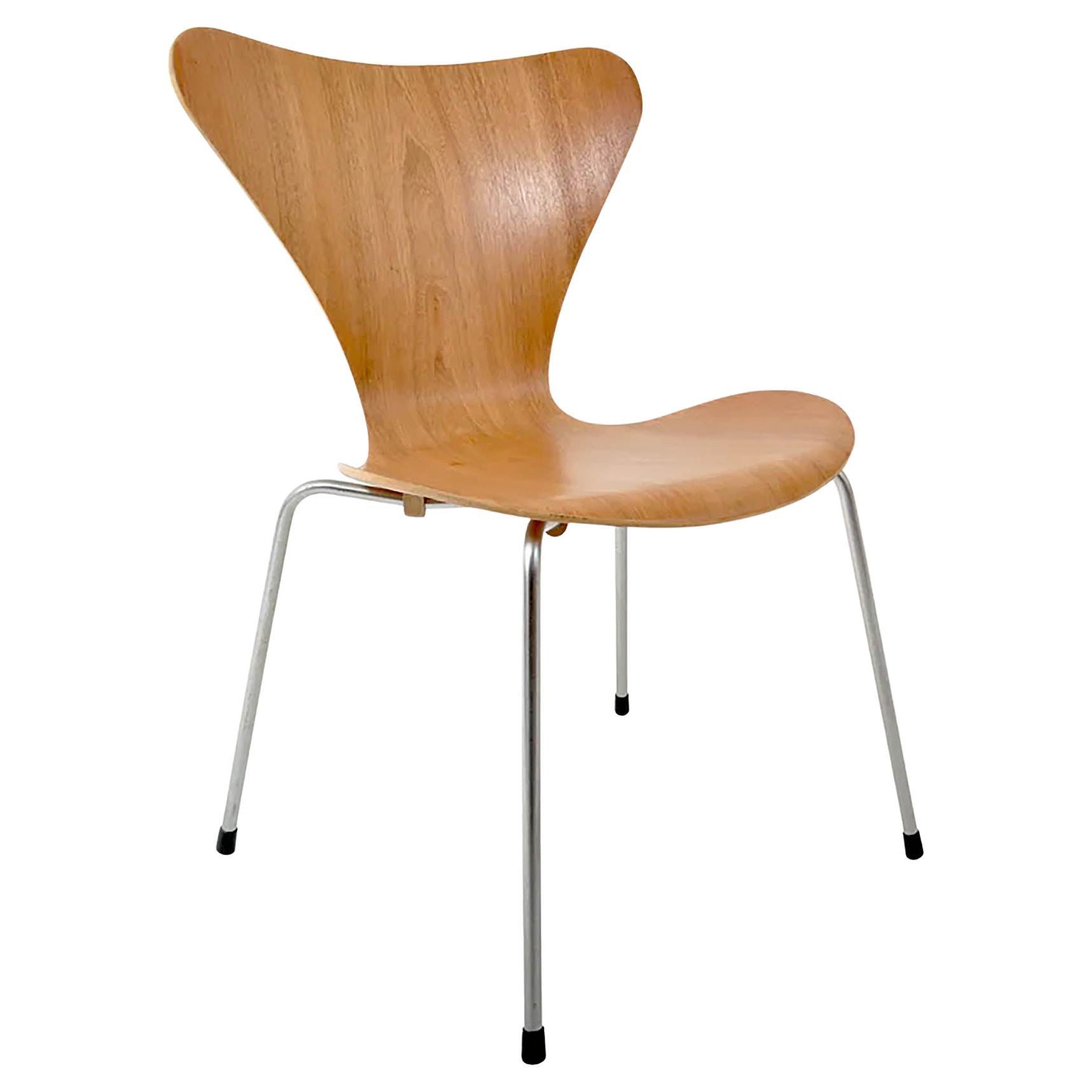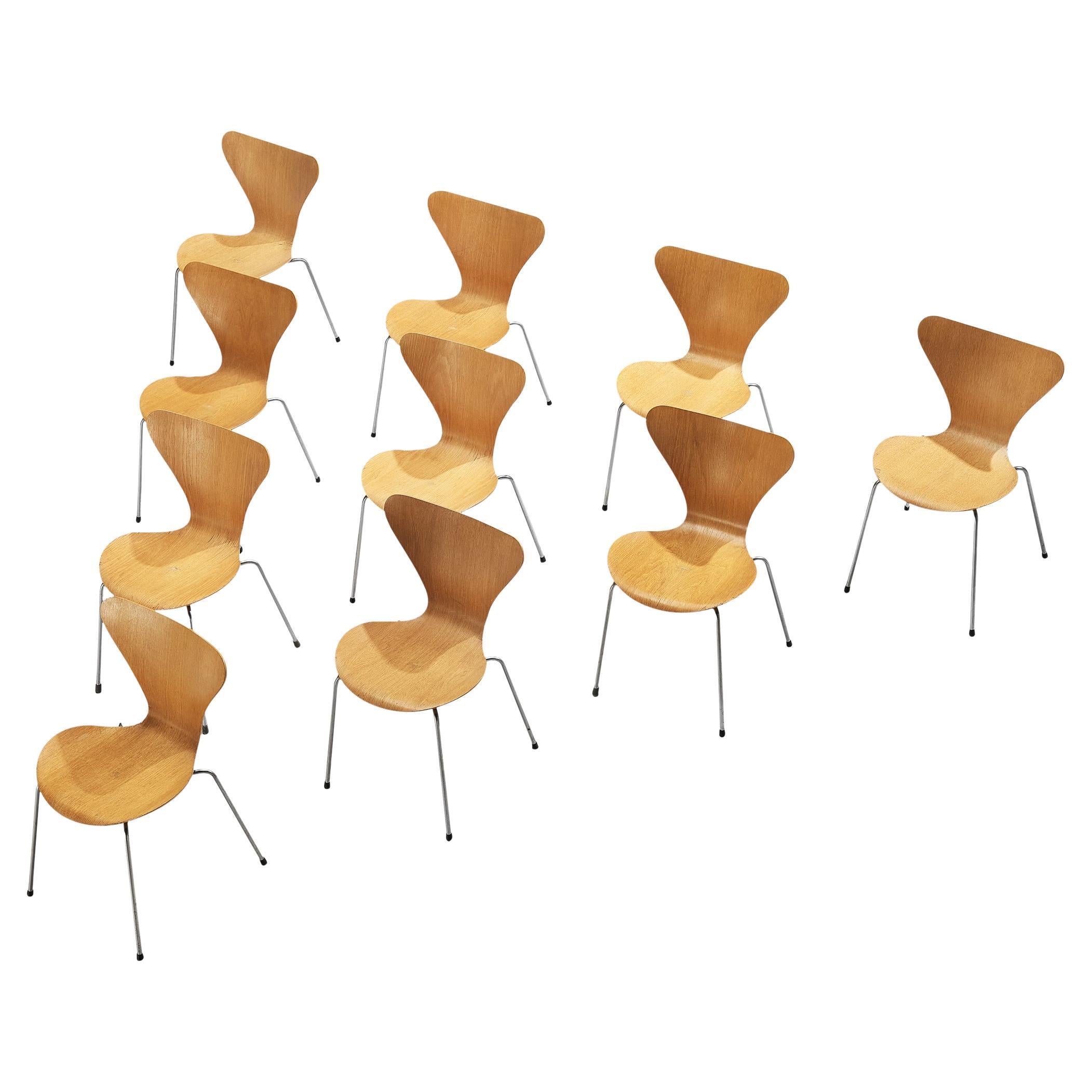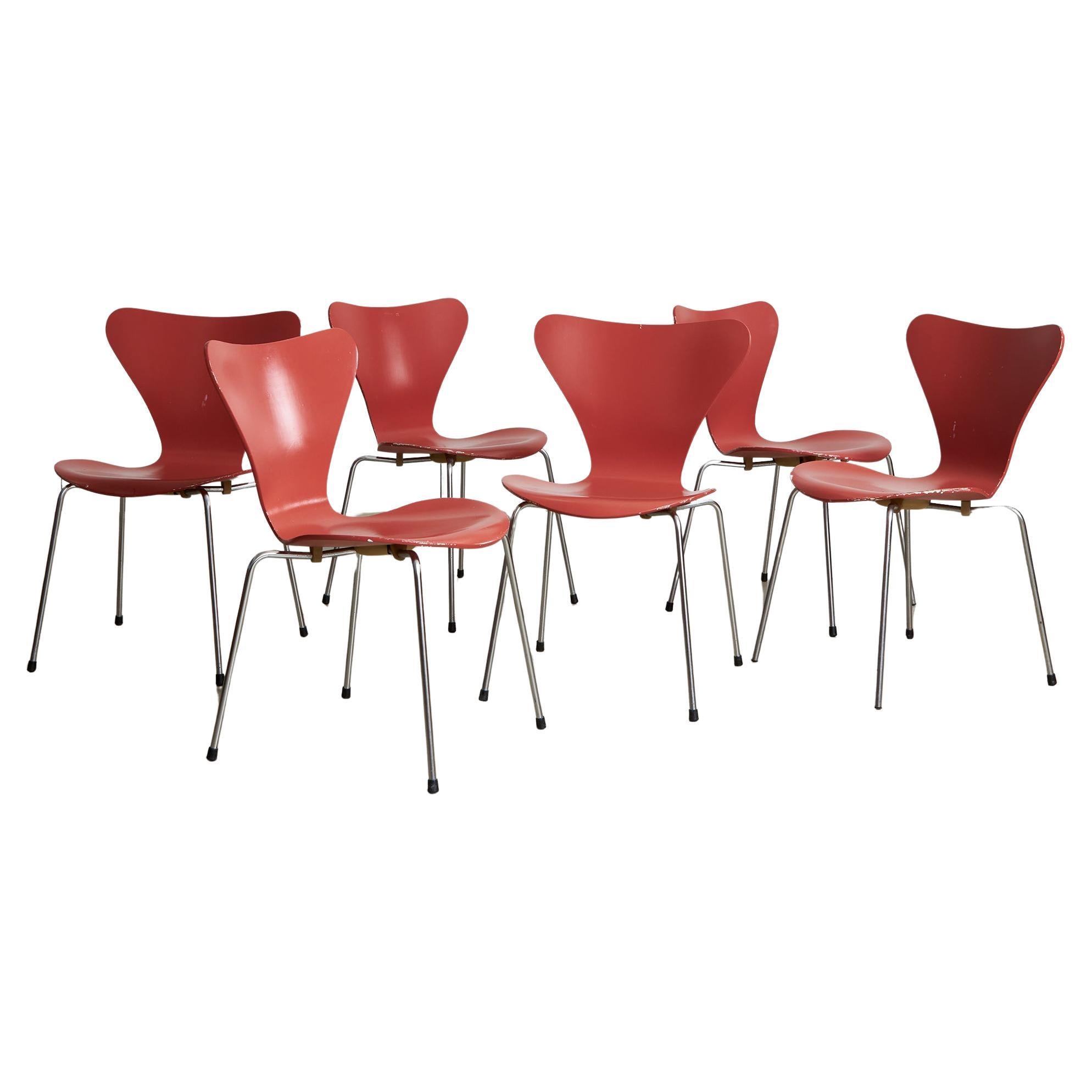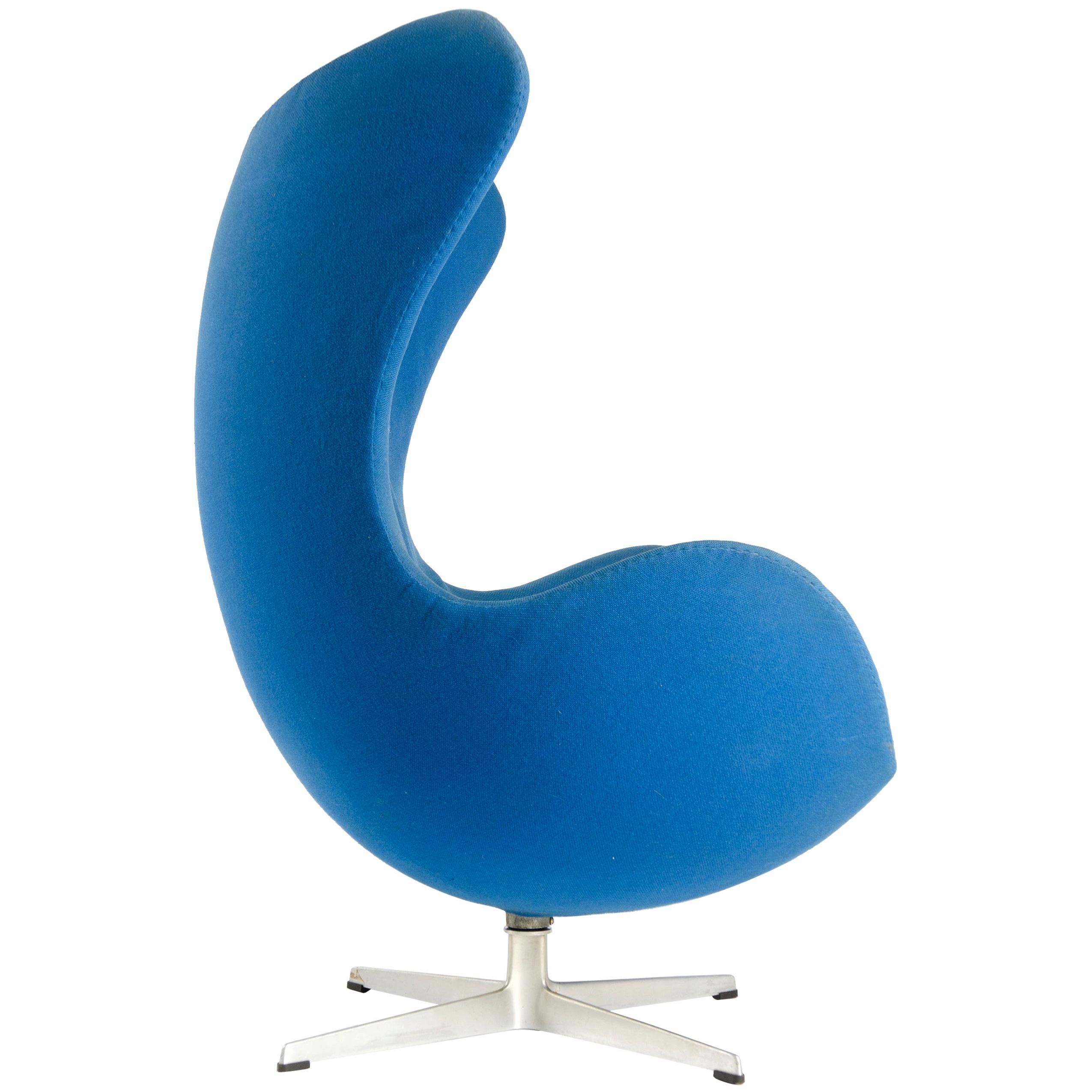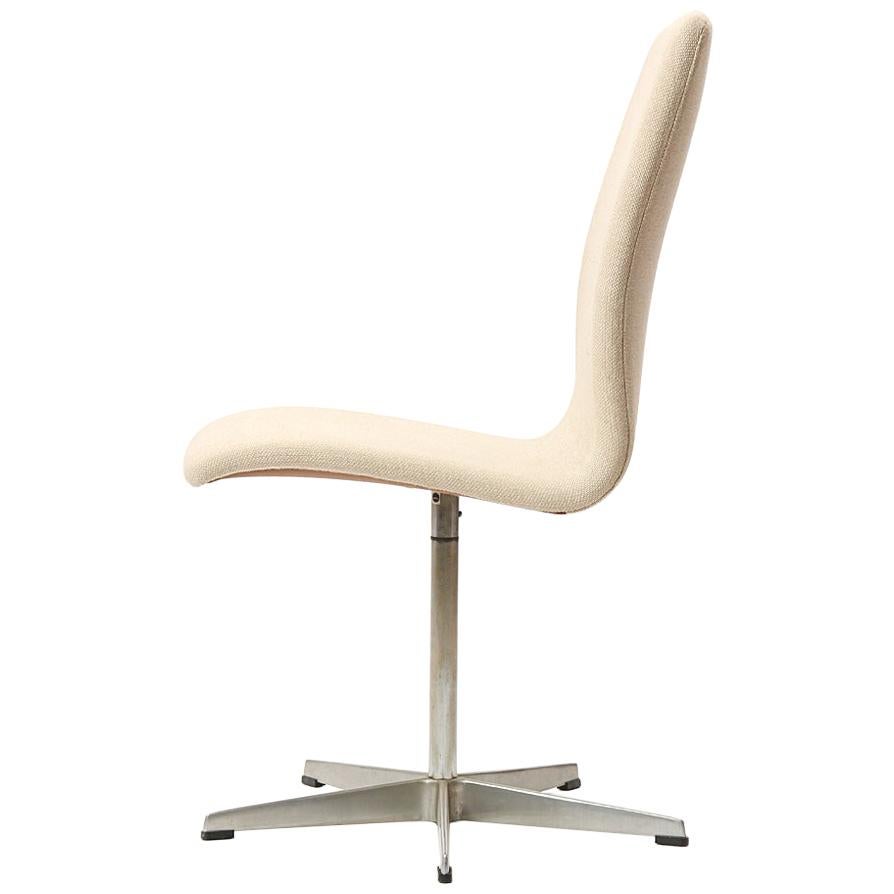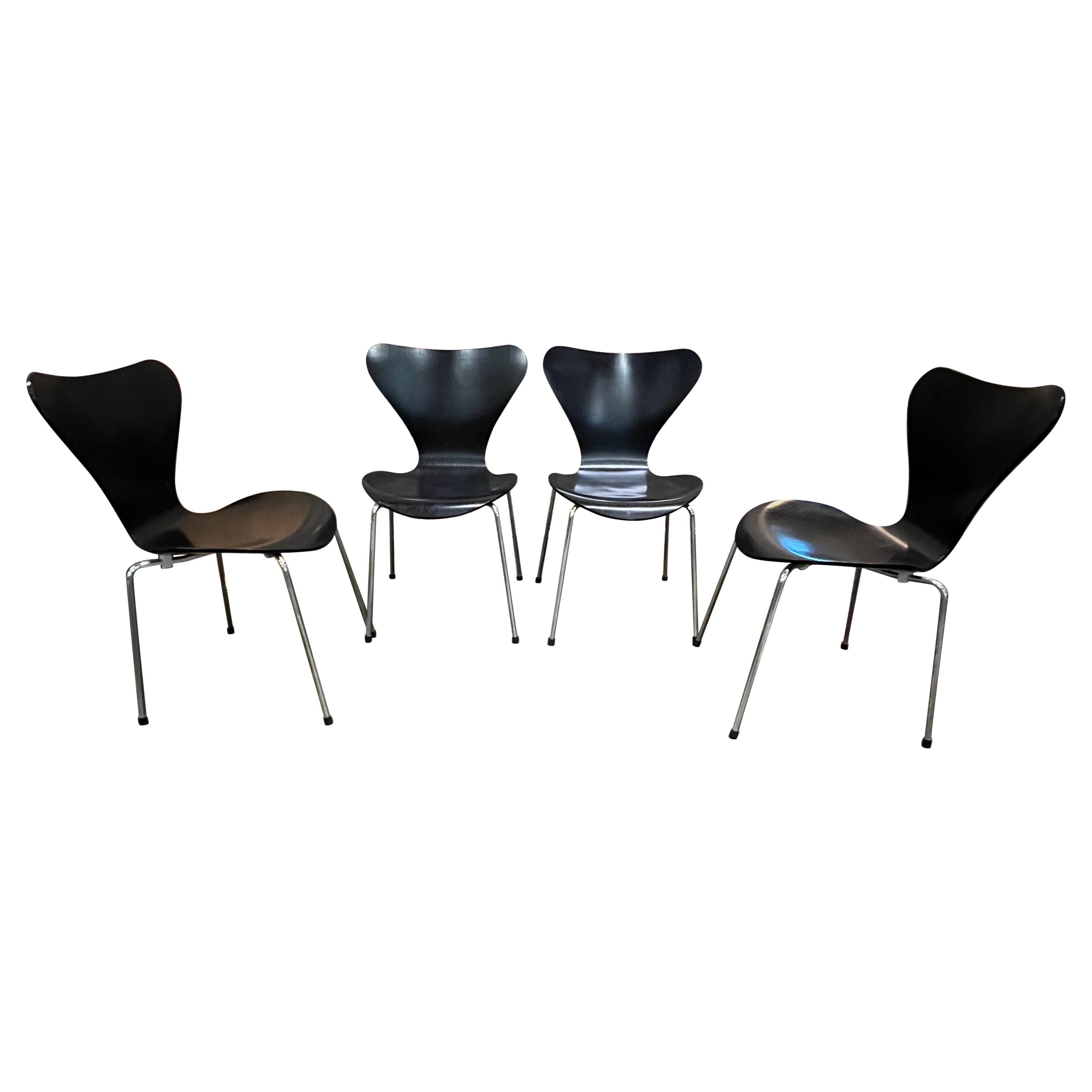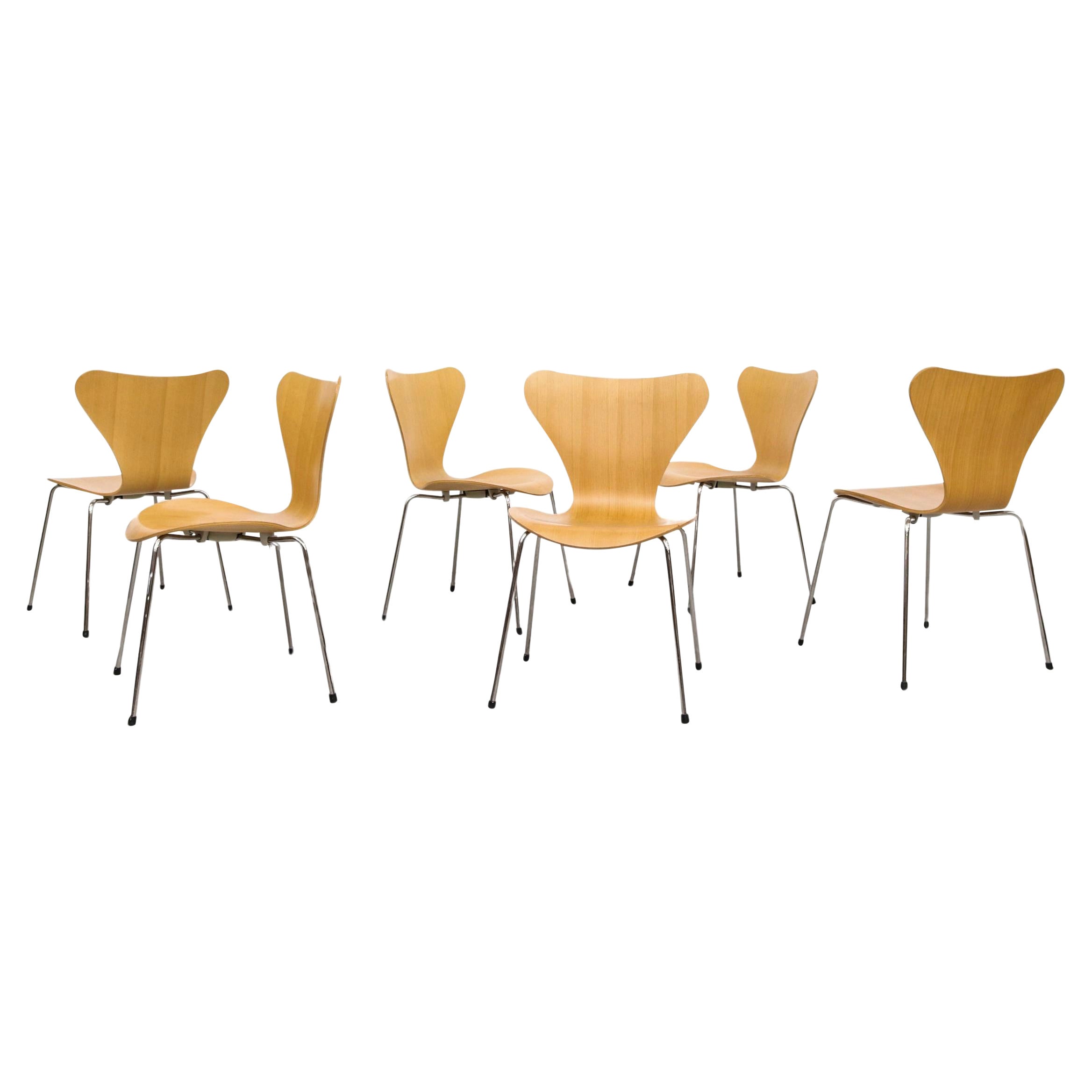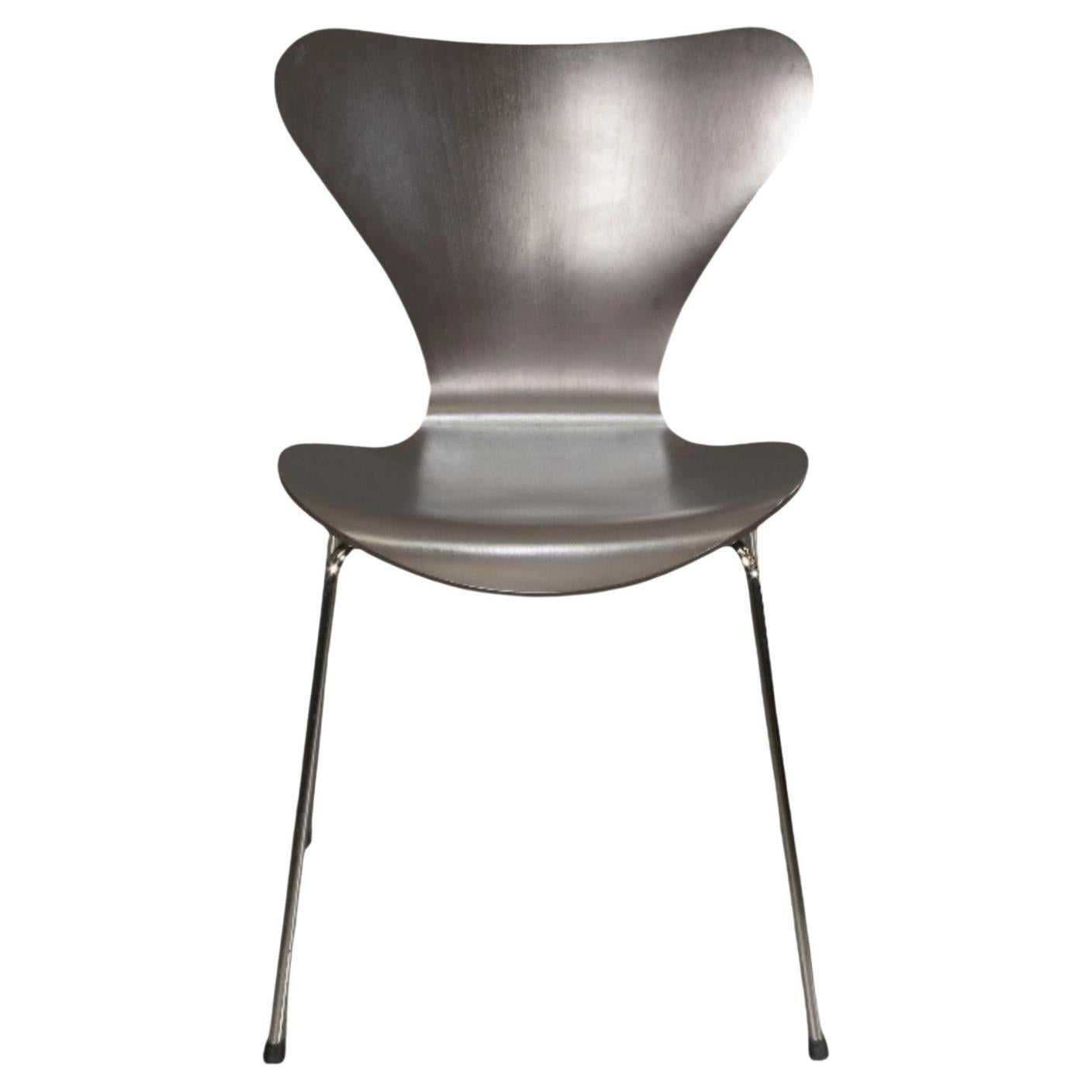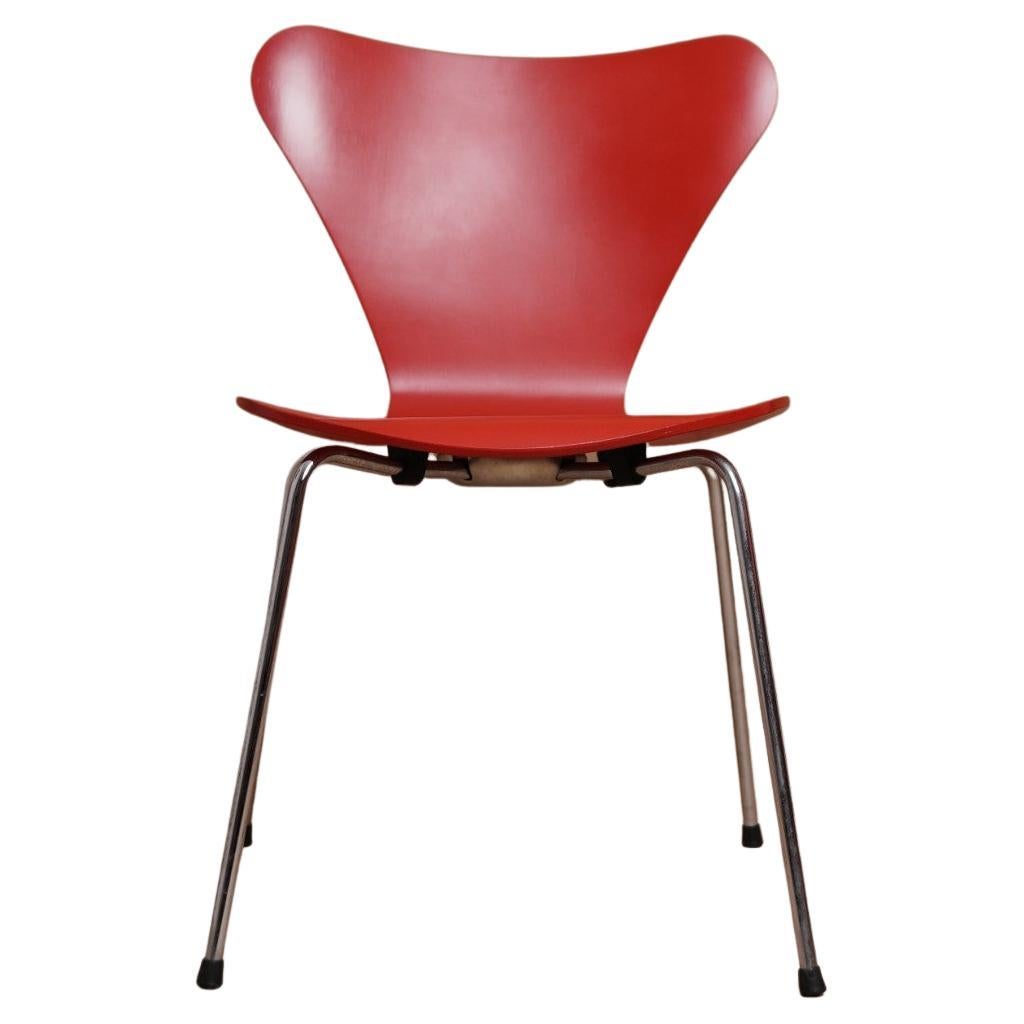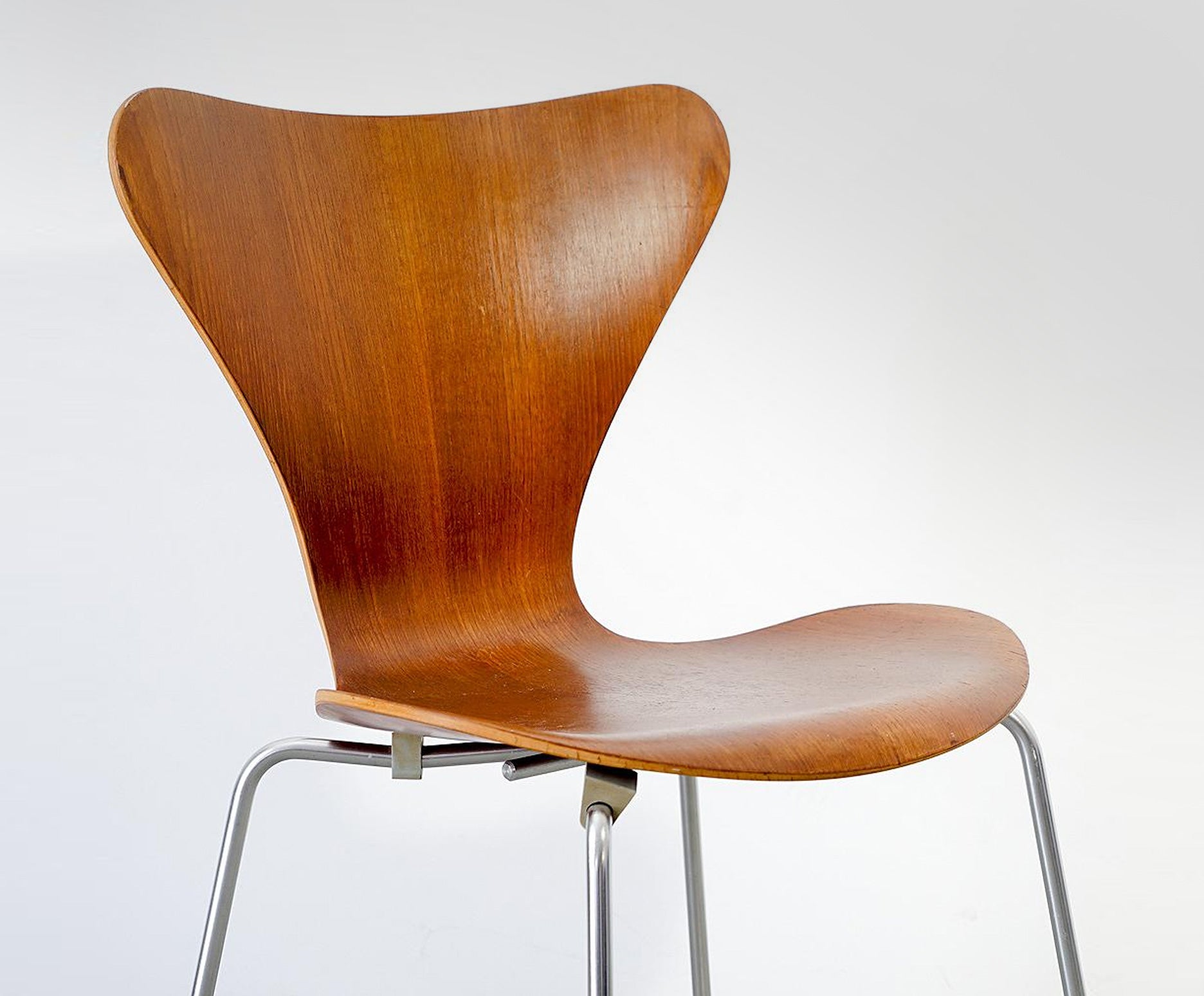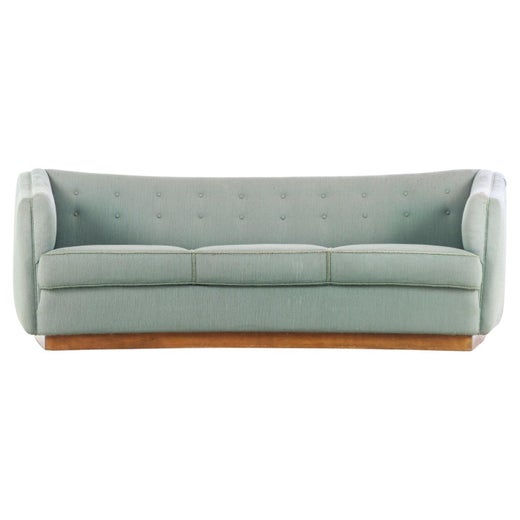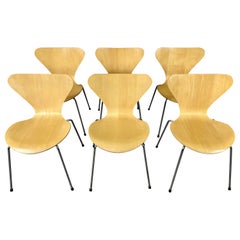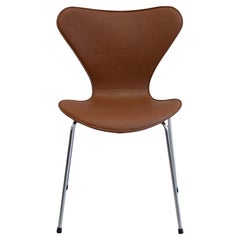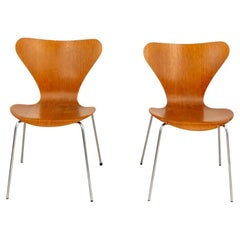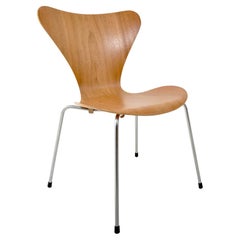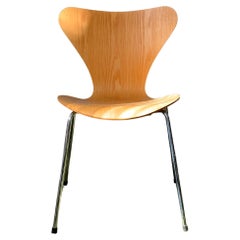
Arne Jacobsen for Fritz Hansen Series 7 Natural Plywood 3017 Chair
View Similar Items
Arne Jacobsen for Fritz Hansen Series 7 Natural Plywood 3017 Chair
About the Item
- Creator:Fritz Hansen (Designer),Arne Jacobsen (Designer)
- Design:
- Dimensions:Height: 31.5 in (80 cm)Width: 19.69 in (50 cm)Depth: 19.69 in (50 cm)Seat Height: 17.92 in (45.5 cm)
- Style:Scandinavian Modern (In the Style Of)
- Materials and Techniques:
- Place of Origin:
- Period:1990-1999
- Date of Manufacture:1993
- Condition:Wear consistent with age and use.
- Seller Location:Debrecen-Pallag, HU
- Reference Number:1stDibs: LU3546336427772
Series 7 Chair
The celebrated Model 3107, or Series 7, chair showcases Arne Jacobsen’s (1902–71) trademark understatement and interplay between form and functionality. Part of a seductive foray into minimalism for the modernist Danish architect and designer, the Series 7’s seat and backrest were produced from a single piece of bent plywood in 1955 for manufacturer Fritz Hansen.
The lean, stackable chair updates Jacobsen’s simple and spare 1952 Ant chair to a broader base while retaining its revolutionary construction (also a one-piece seat and back) and adding an extra leg. It was a thoroughly modern design inspired in equal parts by the Danish cabinetmaking tradition that preceded Jacobsen as well as the gentle and organic forms that typified Scandinavian modernist furniture. The chair was also a technical advancement of Charles and Ray Eames’ innovative plywood molding techniques.
Trained as a mason and then an architect, Jacobsen assisted in Copenhagen's City Architect's Office after graduating from the Royal Danish Academy of Fine Arts in 1927, where he eventually became a professor. He set up his own design practice in 1930 and produced large-scale projects such as the Bellavista housing estate, a revered work of Bauhaus-style architecture situated north of Copenhagen in Klampenborg.
In 1960, Jacobsen completed his architectural work on the 22-story SAS Royal Hotel and Air Terminal in Denmark’s capital city, but, as he preferred to be involved thoroughly in such commissions, he designed the interiors as well as every other possible detail for the accommodation property, from lighting to textiles to furniture. A diverse designer with a world-famous work ethic, Jacobsen also created modern light fixtures, bathroom fittings, cutlery and metalware — a 1957 set of flatware he designed for A. Michelsen was featured in Stanley Kubrick’s 2001: A Space Odyssey.
Jacobsen was one of the most successful and accomplished Danish designers of the 20th century. Along with the Ant and massively successful Series 7, his Swan and Egg chairs, produced in 1958 for the SAS hotel, are definitive exports and exemplify Danish modern’s marriage of quality materials, simplicity and thoughtful form.
The Series 7 has remained in production since 1955 at Fritz Hansen, where carpenters carefully select and cut sheets of veneer by hand in order to maintain the chair’s classic shape. It remains among Jacobsen’s most simple and pared-down chairs, and while each model is made of pressure-molded sliced veneer, the Series 7 is available in varying veneers and finishes. It is the most sold chair in the manufacturer’s history.
Fritz Hansen
When the Copenhagen-based furniture maker Fritz Hansen opened for business more than 140 years ago, the company — which today styles itself The Republic of Fritz Hansen — adhered to the traditional, time-honored Danish values of craftsmanship in woodworking and joinery. Yet thanks to the postwar innovations of Arne Jacobsen and others, Fritz Hansen would become the country’s leader in Scandinavian modern design using new, forward-looking materials and methods.
Fritz Hansen started his company in 1872, specializing in the manufacture of small furniture parts. In 1915, the firm became the first in Denmark to make chairs using steam-bent wood (a technique most familiar from birch used in the ubiquitous café chairs by Austrian maker Thonet). At the time, Fritz Hansen was best known for seating that featured curved legs and curlicue splats and referenced 18th-century Chippendale designs.
In the next few decades, the company promoted simple, plain chairs with slatted backs and cane or rush seats designed by such proto-modernist masters as Kaare Klint and Søren Hansen. Still, the most aesthetically striking piece Fritz Hansen produced in the first half of the 20th century was arguably the China chair of 1944 by Hans Wegner — and that piece, with its yoke-shaped bentwood back- and armrest, was based on seating manufactured in China during the Ming dynasty. (Wegner was moved by portraits he’d seen of Danish merchants in the Chinese chairs.)
Everything changed in 1952 with Arne Jacobsen’s Ant chair. The collaboration between the architect and Fritz Hansen officially originated in 1934 — that year, Jacobsen created his inaugural piece for the manufacturer, the solid beechwood Bellevue chair for a restaurant commission. The Ant chair, however, was the breakthrough.
With assistance from his then-apprentice Verner Panton, Jacobsen designed the Ant chair for the cafeteria of a Danish healthcare company called Novo Nordisk. The chair was composed of a seat and backrest formed from a single piece of molded plywood attached, in its original iteration, to three tubular metal legs. Its silhouette suggests the shape of the insect’s body, and the lightweight, stackable chair and its biomorphic form became an international hit.
Jacobsen followed with more plywood successes, such as the Grand Prix chair of 1957. The following year he designed the SAS Royal Hotel in Copenhagen and its furnishings, including the Egg chair and the Swan chair. Those two upholstered pieces, with their lush, organic frames made of fiberglass-reinforced polyurethane, have become the two chairs most emblematic of mid-20th-century cool. Moreover, the Egg and Swan led Fritz Hansen to fully embrace new man-made materials, like foam, plastic and steel wire used to realize the avant-garde creations of later generations of designers with whom the firm collaborated, such as Piet Hein, Jørn Utzon (the architect of the Sydney Opera House) and Verner Panton. If the Fritz Hansen of 1872 would not now recognize his company, today’s connoisseurs certainly do.
Find a collection of vintage Fritz Hansen tables, lounge chairs, sofas and other furniture on 1stDibs.
You May Also Like
Mid-20th Century Mid-Century Modern Chairs
Beech
Early 2000s Danish Scandinavian Modern Chairs
Leather, Bentwood
Vintage 1970s Danish Mid-Century Modern Chairs
Chrome
Vintage 1960s Danish Scandinavian Modern Chairs
Steel
Vintage 1950s Danish Scandinavian Modern Chairs
Steel
Vintage 1950s Danish Chairs
Steel
Recently Viewed
View AllRead More
The 21 Most Popular Mid-Century Modern Chairs
You know the designs, now get the stories about how they came to be.
Arne Jacobsen’s Egg Chair Scrambled the Idea of What a Wingback Could Be
The curvaceous Egg was designed to cradle the body and offer privacy. Later, it became the seat of choice for bosses in movies, too.
